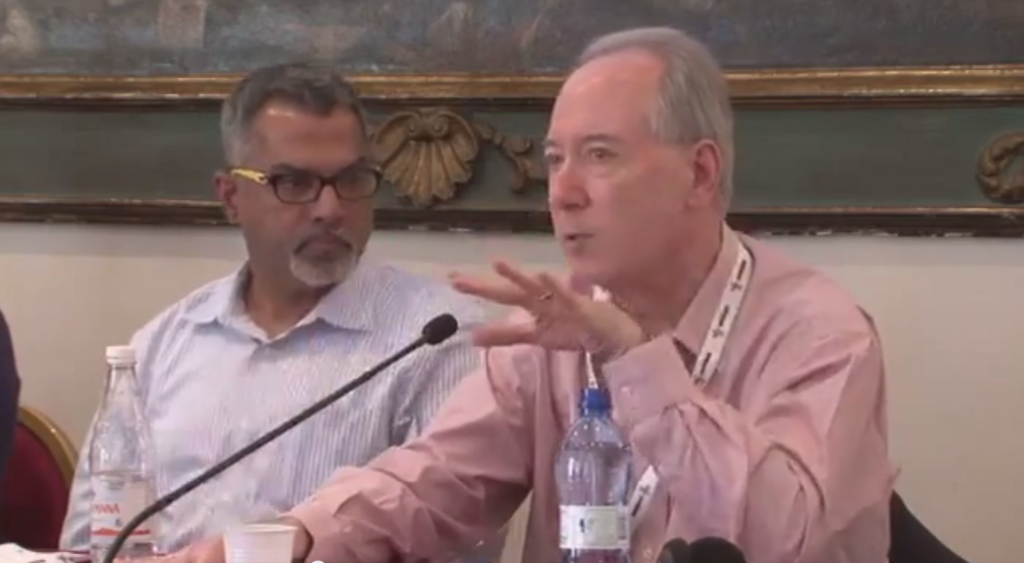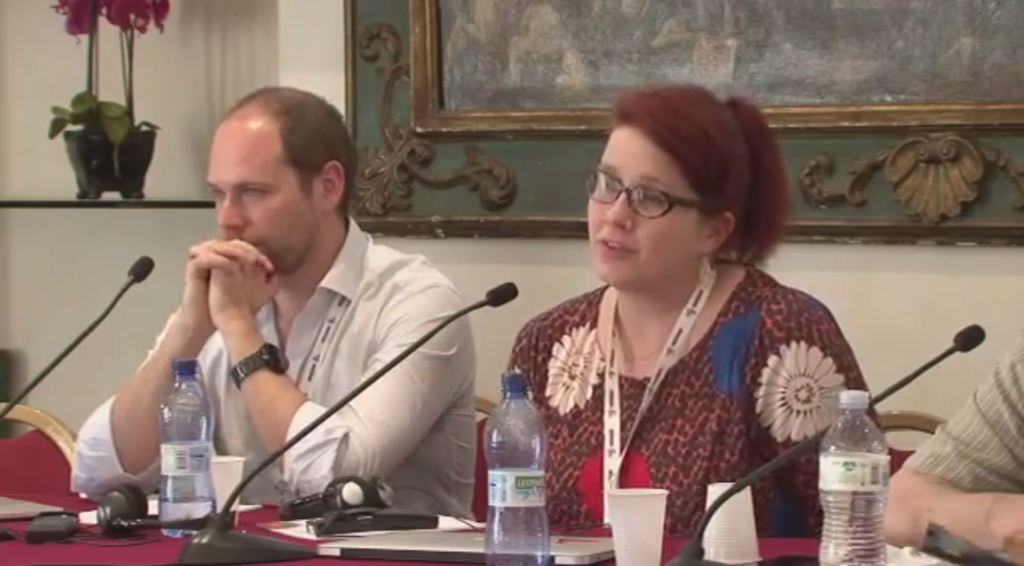International Journalism Festival Perugia, 15 – 19 April 2015
Take a notepad, pencil and preferably a good old-fashioned hat and people will think you are a journalist. But to make interactive stories like Do No Harm (Las Vegas Sun), Government Spending by Department (The Guardian) or the Immigration Explorer (The New York Times) you might think of another kind of stereotype, for example the nerdy coder that lives in the attic and speaks in a language we don’t understand. Or maybe even a..
u·ni·corn | noun | a rare, magical creature that lives
in the newsroom at the intersection of coding and journalism
This definition is a quote by Garrett Goodman of Wochit, who offered it during the IJF session entitled The Unicorns of the Newsroom. Although it might sound quite glamorous and adventurous, none of the session’s participants were particularly fond of the term.
Why would that be? For starters, as Dan Gillmor said “if you’re doing journalism, you’re doing technology, period, that’s just a fact”. In other words, the strict distinction between coding and journalism is one that doesn’t hold. Telling stories is enabled and enhanced by a broad range of technological supplements and it has been like this for a long time.

Raju Narisetti (News Corp) and Dan Gillmor (Walter Cronkite J-School). Source: screenshot from IJF15 video
More than that though, the connotations that come with being called a unicorn – a mythical animal – are worrisome. It makes what you do feel like magic, something that can’t really be and that we – ‘normal’ people – don’t have any control over or understanding of; it enhances the divide with writing journalists. Moreover, it damages the potential creative collaboration between people with different skills that co-exist in a newsroom. As long as coders and designers are called in at the very last moment to add a visual component to a story, their contributions are kept far from the brilliance of the examples at the beginning of this post.
To counter this current situation, Aron Pilhofer of The Guardian suggested physically removing bariers between journalists and coders and to keep them in each other’s proximity in the newsroom. Raju Narisseti of News Corp stressed the importance of terminology: no one knows what exactly it is that a ‘Ruby developer’ does, but readers can imagine and attribute value to the role of an ‘interaction designer’. He in fact made a case for giving journalistic credit to those involved with the technical aspects of storytelling. This will enhance their feeling of ownership of and creative input to the stories.
Pilhofer summed it all up by saying “if your newsroom doesn’t have a unicorn, that’s when it becomes a question of magic to tell these stories”. For our purposes, I think the translation of this thought from the newsroom to the broader publishing environment is very useful, and was already addressed by the INC’s Digital Publishing Toolkit project. There is still a lot to discover, but a good first step I think would be to go out and do it.

Garrett Goodman (Wochit) and Jacqui Maher (a ‘unicorn’, or rather, an interactive journalist at BBC News Labs). Source: screenshot from IJF15 video
—————————————————————————–
For more history on the use of magic to describe the functionality of code, read this post on the Masters of Media blog by Rose Rowson, who researches magical writing practices in contemporary digital culture. And on the 15th of May the University of the Arts London organises the Technology is the New Magic symposium, with speakers like Jussi Parikka and Phil van Allen among others.
Some interesting sessions about technology in the newsroom at the IJF Perugia:


